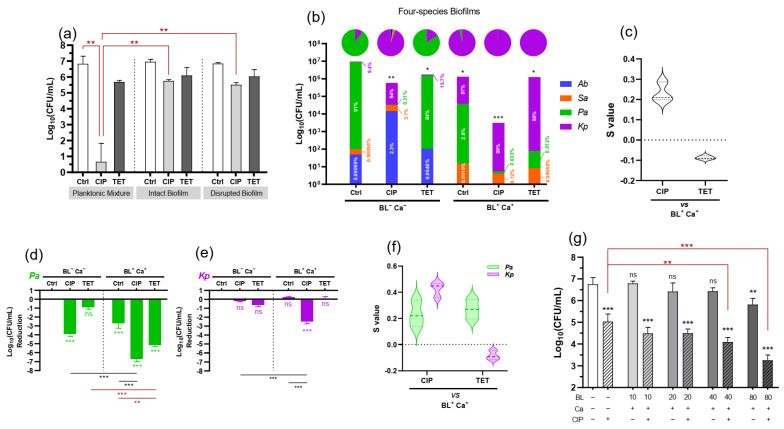Figure 2.
BL-Ca treatment enhances ciprofloxacin potency on polymicrobial biofilms. (a) Biofilm-associated tolerance to ciprofloxacin (CIP) or tetracycline (TET) as compared with the planktonic mixture with a similar composition. The bacteria either in intact or disrupted biofilm or planktonic culture were exposed to CIP (10 µg/mL) or TET (40 µg/mL) for 5-h in BHI medium, after which bacteria (Log10CFU/mL) survived the treatment were determined. (b) Stacked bar chart showing survived bacteria after different treatments. Pie charts above each column depicted corresponding species compositions in linear scale. (c) Synergy of BL-Ca treatment and antibiotics on biofilm survival. (d,e) Log reductions of biofilm-associated P. aeruginosa (d) and K. pneumoniae (e) after different treatments. (f) Synergy of BL-Ca treatment and antibiotics on the survival of embedded P. aeruginosa or K. pneumoniae determined by S values as detailed in Materials and Methods. 0 ˂ S ˂ 1 indicates a synergistic interaction, whereas S ˂ 0 indicates an antagonistic interaction. (g) Increasing BL irradiance could enhance the potentiation of CIP on polymicrobial biofilms. Sa: S. aureus; Ec: E. coli; Kp: K. pneumoniae; Ab: A. baumannii; Pa: P. aeruginosa. *** p < 0.001; ** p < 0.01; * p < 0.05; and ns, no significance.

